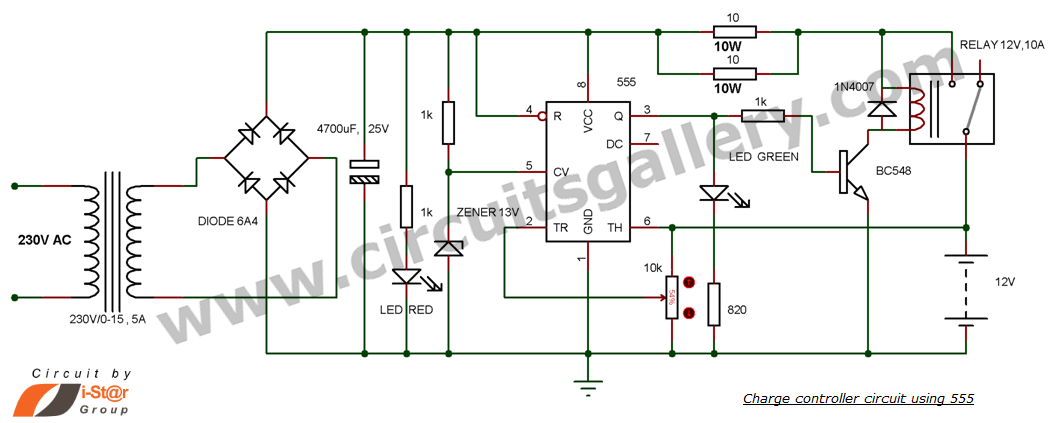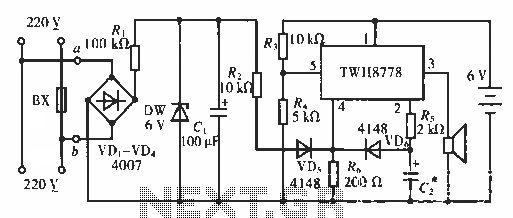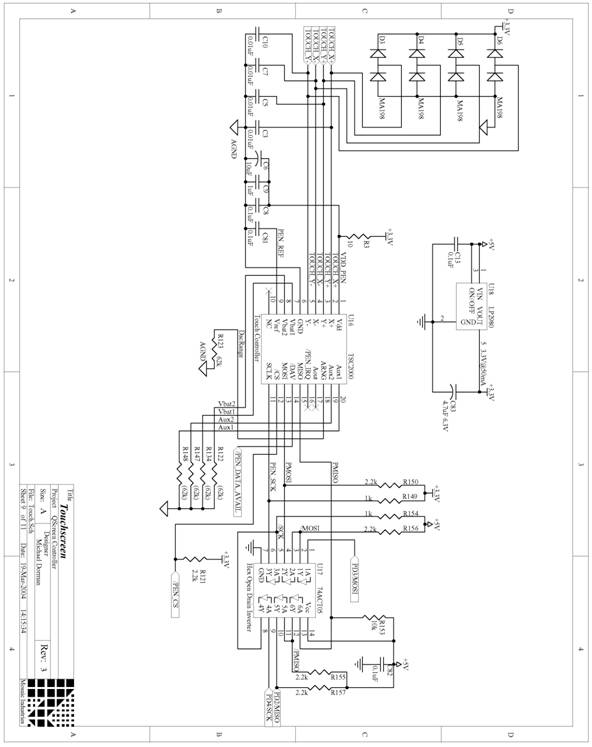
Bargraph Led Battery Tester Circuit

The LM3914A bar graph LED is utilized as a voltmeter for testing batteries. This circuit operates on a 4.5-V battery and compares the battery under test with an internally generated reference, established by resistors R1, R2, and potentiometer P1. Each of the 10 LEDs represents 10% of the full scale. For optimal performance, the device under test (D.U.T.) should be loaded with a suitable resistor.
The circuit employs the LM3914A, a versatile LED bar graph/LED dot display driver. It features a linear output that corresponds to the input voltage, making it ideal for visual representation of voltage levels. The reference voltage for the LM3914A is determined by the resistive divider formed by R1 and R2, along with the variable adjustment provided by potentiometer P1. This configuration allows the user to calibrate the circuit to accurately reflect the voltage of various battery types.
The operation of the circuit begins when the battery under test is connected. The input voltage is applied to the LM3914A, which processes this voltage and lights up the corresponding number of LEDs based on the level of the input voltage compared to the reference voltage. Each LED indicates a specific voltage range, with ten LEDs providing a clear visual representation of the battery's state of charge.
To enhance measurement accuracy, it is recommended to load the battery under test with an appropriate resistor. This loading simulates real-world conditions, ensuring that the voltage readings reflect the battery's performance under typical usage scenarios. The resistor value should be chosen based on the specifications of the battery being tested, ensuring it draws a current that allows for an accurate assessment of the battery's voltage output.
The circuit design is relatively simple, making it accessible for hobbyists and professionals alike. Proper component selection and calibration are essential for achieving reliable results, and users are encouraged to refer to the LM3914A datasheet for detailed specifications and application notes. This setup provides an effective means of monitoring battery health and performance, making it an invaluable tool in both laboratory and field testing environments. The LM3914A bargraph LEDis used here as a voltmeter for battery testing. The circuit is powered by a 4.5-V battery and compares the battery under test with an internally derived reference, set by R1/R2/P1. Each LED of the 10 represent 10% of full scale. For best results, the battery (D.U.T.) should be loaded with an appropriate resistor.
The circuit employs the LM3914A, a versatile LED bar graph/LED dot display driver. It features a linear output that corresponds to the input voltage, making it ideal for visual representation of voltage levels. The reference voltage for the LM3914A is determined by the resistive divider formed by R1 and R2, along with the variable adjustment provided by potentiometer P1. This configuration allows the user to calibrate the circuit to accurately reflect the voltage of various battery types.
The operation of the circuit begins when the battery under test is connected. The input voltage is applied to the LM3914A, which processes this voltage and lights up the corresponding number of LEDs based on the level of the input voltage compared to the reference voltage. Each LED indicates a specific voltage range, with ten LEDs providing a clear visual representation of the battery's state of charge.
To enhance measurement accuracy, it is recommended to load the battery under test with an appropriate resistor. This loading simulates real-world conditions, ensuring that the voltage readings reflect the battery's performance under typical usage scenarios. The resistor value should be chosen based on the specifications of the battery being tested, ensuring it draws a current that allows for an accurate assessment of the battery's voltage output.
The circuit design is relatively simple, making it accessible for hobbyists and professionals alike. Proper component selection and calibration are essential for achieving reliable results, and users are encouraged to refer to the LM3914A datasheet for detailed specifications and application notes. This setup provides an effective means of monitoring battery health and performance, making it an invaluable tool in both laboratory and field testing environments. The LM3914A bargraph LEDis used here as a voltmeter for battery testing. The circuit is powered by a 4.5-V battery and compares the battery under test with an internally derived reference, set by R1/R2/P1. Each LED of the 10 represent 10% of full scale. For best results, the battery (D.U.T.) should be loaded with an appropriate resistor.





